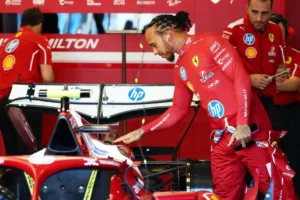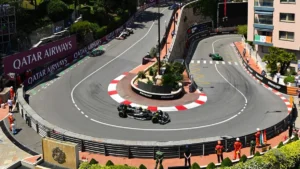Formula 1 fans, get ready! The all-new Madring circuit is making its grand debut in 2026, right in the heart of Spain’s vibrant capital, Madrid. It’s not just any race track. Madring promises to bring fresh excitement, unique challenges, and a big spotlight on Spain as it joins the F1 calendar. So, what’s all the buzz about this new venue? Let’s dive into everything you need to know about Madring.
Welcome to Madring: F1’s New Spanish Star
Starting September 2026, Madrid will host the Spanish Grand Prix on the brand-new Madring circuit for what is planned to be a decade-long stay on the Formula 1 schedule. This makes Madrid the only European capital city racing in F1, adding some serious urban flair to the sport. The race will likely become the highlight of the Spanish motorsport scene, replacing the legendary Imola track in Italy from that year onward.
What Makes Madring So Special?
The track is a 5.4-kilometer (around 3.35 miles) mix of urban streets and purpose-built sections, creating a thrilling hybrid layout that’s fast but technically demanding. It features a whopping 22 corners, that’s two more than the first plan! This means drivers will be kept on their toes all race long, with complex turns and tricky sections to show off their skills.
One of the star features of Madring is the Monumental curve (Turn 12). Think of it as a nod to Madrid’s rich culture, inspired by the city’s famous bullfighting arena, Las Ventas. This corner is a steeply banked turn with a 24% gradient, stretching 550 meters long. Drivers will blast through here at about 300 km/h, and fans in the grandstands (which can hold 45,000 people!) will see cars race through this breathtaking section in just over five seconds. It’s expected to become an iconic part of the F1 championship, like Zandvoort’s Luyendyk corner, with adrenaline-pumping views and possibly key overtaking chances.
The Race Layout and Key Moments
Starting Straight: The race begins with a 589-meter straight—the second longest on the circuit. Drivers sprint down here at breakneck speed, reaching up to 320 km/h, setting up the intense battles right from the start.
Overtaking Zones: Turns 1 and 2 slow the cars from 320 km/h to around 100 km/h at a chicane, creating a great spot for overtaking. Another prime place to watch is the chicane under the motorway overpass at Turns 5 and 6, which is described as the best overtaking chance on the track.
Uphill and Downhill Sections: The track includes an 8% uphill climb called Subida de las Carcavas near Turn 7, followed by fast, sweeping downhill corners (Turns 10 and 11) that let drivers push their cars hard and time their moves carefully.
Urban Feel: The circuit snakes through well-known local neighborhoods like Hortaleza and passes close to Madrid’s fancy exhibition center IFEMA, blending the city vibe with racing thrills.
Exciting Times Ahead
Madrid’s race will appear alongside the traditional Spanish GP in Barcelona for 2026, but Barcelona’s future beyond that is uncertain, meaning Madring could soon become Spain’s premier F1 race. The very first Spanish GP at Madring is set for September 13, 2026. It will be round 16 of the 24-race 2026 season and part of a post-summer triple header, promising a packed and thrilling F1 schedule that year.
Also read: Everything New At F1 2026: All The Rules Explained





















